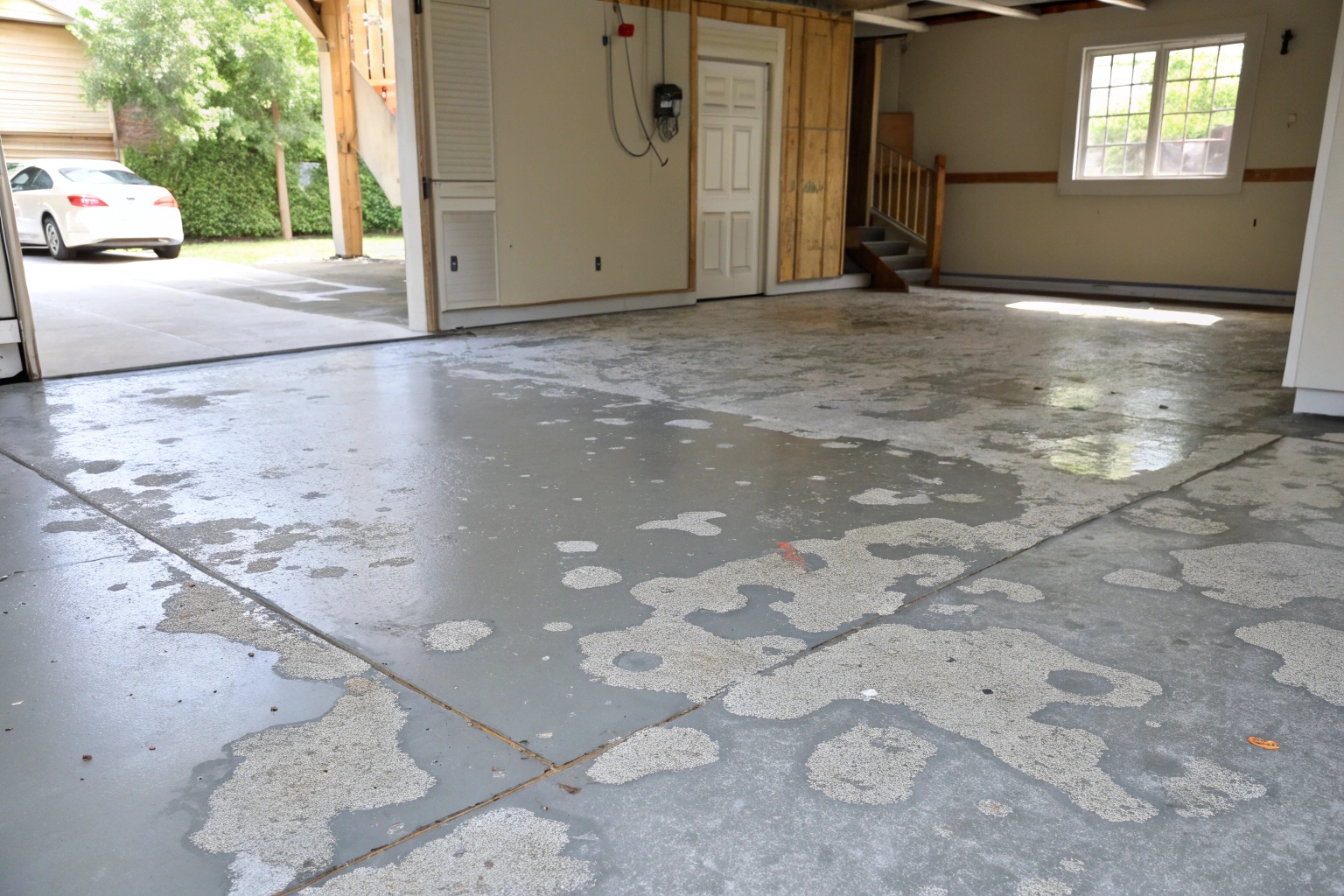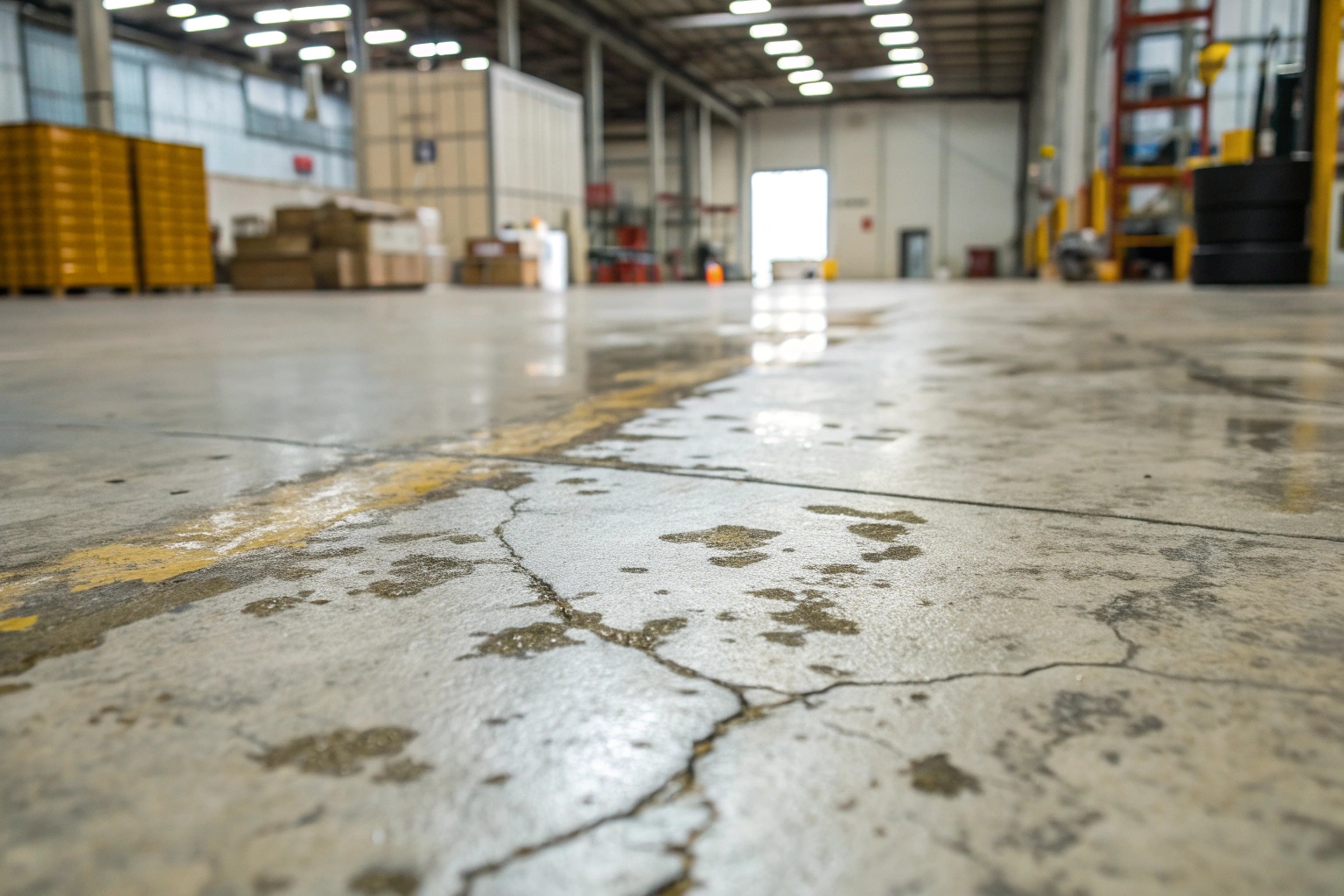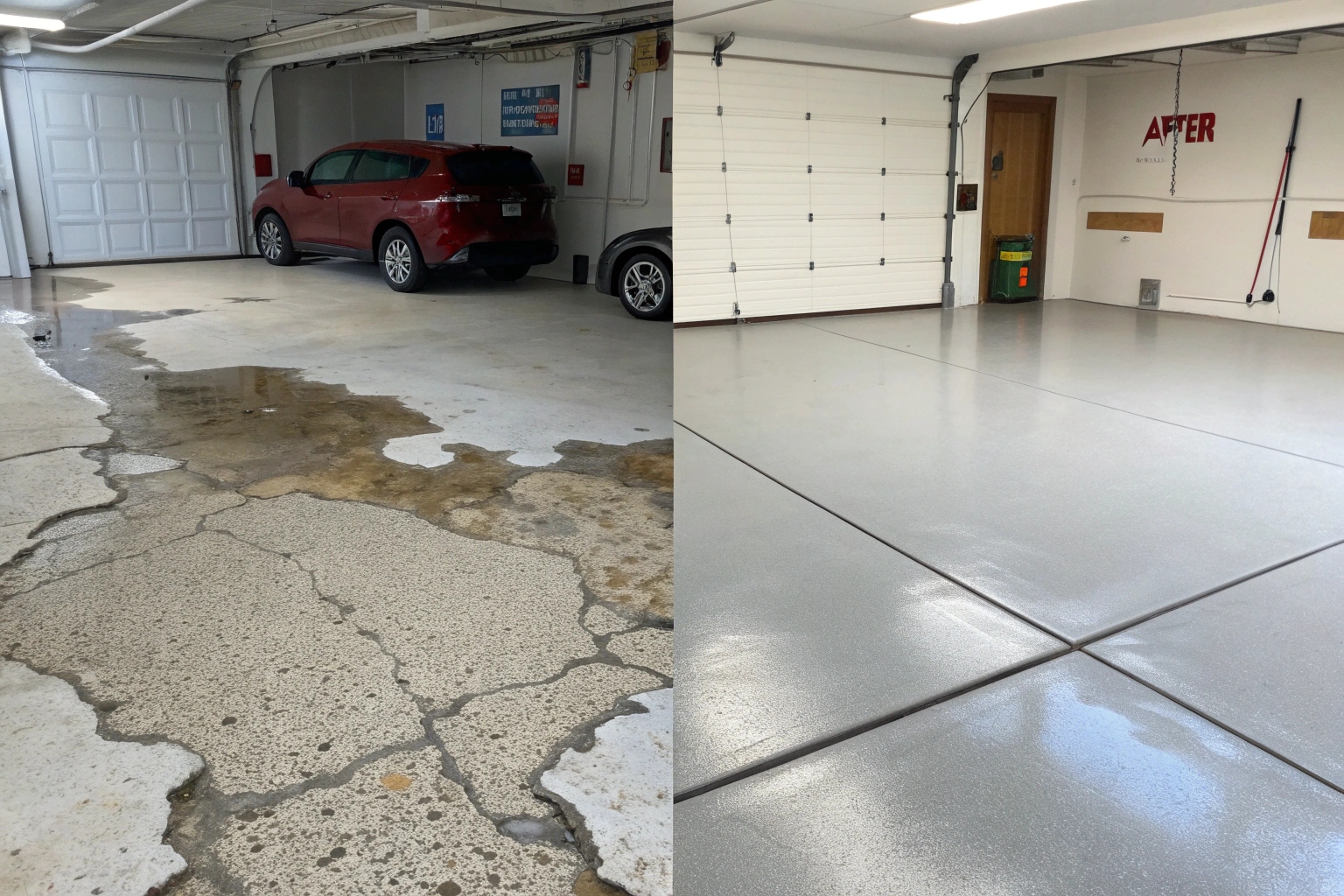Why Professional Old Epoxy Floor Removal Matters

Most people think epoxy removal is straightforward – rent a grinder, scrape it off, done. We get calls every month from property owners who tried that approach and regretted it.
Last year, a warehouse manager in Port Kembla spent two weekends trying to remove failed epoxy with a rented floor grinder. He got through about 30% of the floor before the machine overheated, the dust clogged his facility’s ventilation system, and he realised he’d actually gouged channels into the concrete. The repair work cost him more than professional removal would have.
Professional old epoxy floor removal isn’t just about getting the coating off. We’re preparing your concrete for whatever comes next – and that requires specific techniques and equipment.
Complete coating elimination means removing every trace of the old system, not just the loose pieces. Partial removal leaves contamination that prevents new coatings from bonding properly.
Surface restoration prepares the concrete substrate for optimal adhesion. We create the right surface profile – not too smooth, not too damaged – so your next floor system actually lasts.
Contamination removal goes beyond the visible coating. Oil stains, chemical residues, and embedded particles all get addressed during professional removal.
Safety compliance protects everyone on site. Our equipment includes dust containment systems, proper ventilation, and disposal protocols that meet NSW environmental regulations.
Substrate protection keeps your concrete intact. We use controlled removal methods that eliminate the coating without damaging the structural slab underneath.

Common Signs Your Epoxy Floor Needs Removal
Walk through any industrial area in Wollongong and you’ll spot failed epoxy coatings everywhere. The signs are pretty obvious once you know what to look for.
Peeling and delamination usually starts at the edges or high-traffic areas. The coating lifts away from the concrete in sheets, creating trip hazards and exposing the bare slab underneath. We removed a coating from a Keiraville garage last month where the homeowner could literally peel back sections with his hands.
Bubbling and blistering happens when moisture gets trapped beneath the coating. You’ll see raised areas that eventually crack and expose the concrete. This is particularly common in Wollongong’s coastal climate where humidity and salt air accelerate coating breakdown.
Chemical staining and etching shows up in automotive shops and industrial facilities. Spilled chemicals eat through the coating, leaving discoloured patches and rough areas that collect dirt and grime.
Wear patterns and thinning occur in high-traffic zones where the coating simply wears away. What started as a thick, protective layer becomes a patchy mess that looks worse than bare concrete.
Colour fading and yellowing makes your floor look old and neglected. UV exposure and cleaning chemicals gradually break down the coating’s appearance, even if it’s still somewhat functional.
When you’re seeing these problems, coating over the top isn’t a solution – it’s just postponing the inevitable failure.
Safety and Environmental Protocols
Epoxy removal creates hazards that most people don’t think about until they’re in the middle of a project. We’ve seen DIY attempts go wrong because someone didn’t account for dust, chemical exposure, or proper waste disposal.

Types of Projects We Handle Across Wollongong
We’ve removed epoxy coatings from just about every type of facility you can imagine across the Wollongong region. Each project type brings its own challenges.
Industrial facilities around Port Kembla often have thick coating systems that have failed under heavy machinery traffic or chemical exposure. These removal projects require powerful equipment and careful planning to work around production schedules. We’ve stripped coatings from manufacturing floors, processing plants, and heavy equipment workshops.
Commercial buildings need removal work that minimises disruption to daily operations. Office lobbies, retail spaces, and showrooms can’t shut down for weeks while we work. We schedule removal in phases, working nights or weekends to keep businesses running.
Residential garages are where we see the most DIY coating failures. Homeowners in Figtree, Mount Pleasant, and Keiraville call us after their weekend coating project starts peeling within a year. These projects are usually straightforward but require careful attention to prevent dust from entering living spaces.
Warehouses and distribution centres need efficient removal that doesn’t halt logistics operations. We coordinate with facility managers to remove coatings section by section, maintaining traffic flow through the building.
Automotive shops in Wollongong have coating systems contaminated by oils, coolants, and chemicals. The removal process needs to address both the failed coating and the contamination beneath it.
Medical facilities require special attention to cleanliness and air quality. We use dustless methods and work during off-hours to maintain the hygienic environment healthcare spaces demand.

Our Assessment and Project Planning Process
Before we bring equipment to your property, we need to understand exactly what we’re dealing with. A removal project that looks simple from the surface can hide complications underneath.
Coating identification tells us which removal method will work best. We examine the existing system to determine if it’s a standard epoxy, polyurethane, or specialty coating. Different products require different approaches.
Adhesion testing shows us how well the coating is bonded to your concrete. We use simple tools to check bond strength in multiple locations. Sometimes we find that 80% of a coating is loose while 20% is still firmly attached – that changes our removal strategy.
Contamination assessment reveals what’s lurking beneath the coating. Oil stains, chemical residues, and moisture issues all affect how we approach removal. We’ve uncovered serious concrete damage that wasn’t visible until the coating came off.
Substrate evaluation examines your concrete’s condition. We look for cracks, spalling, and structural issues that might need addressing after removal. Finding these problems early prevents surprises mid-project.
Timeline development sets realistic expectations. A small residential garage might take a day. A large warehouse could require several weeks of phased removal. We coordinate with your team to minimise disruption to your operations.
Phased removal lets us work section by section for commercial and industrial clients. We adapt to your schedule, not the other way around. Night and weekend scheduling is available to keep your business running during normal hours.
We provide all this information in a detailed quote so you know exactly what to expect.
Frequently Asked Questions About Epoxy Floor Removal
It depends on the size of your floor and the coating thickness. A typical residential garage takes one to two days. Commercial spaces might need three to five days. Large industrial facilities can require several weeks, especially if we’re working in phases around your operations.
We don’t recommend it. Coating over failed epoxy means your new system is only as good as what’s underneath. When the old coating continues to fail, it takes the new coating with it. You’ll be back to square one within months, having wasted money on materials and labour.
With our dustless grinding equipment, very little. We capture about 99% of dust at the source. You’ll see some fine particles in the immediate work area, but we prevent dust from spreading throughout your property with containment barriers and negative air pressure systems.
Not when done properly. We use controlled removal methods that eliminate the coating without gouging or weakening your concrete slab. DIY removal attempts cause most of the concrete damage we see – people use aggressive techniques or improper equipment.
All waste gets transported to licensed disposal facilities. Removed epoxy, contaminated dust, and chemical strippers require proper handling under NSW environmental regulations. We provide disposal documentation for your records.
Yes, selective removal works well when only certain areas have failed. We can remove coating from damaged sections while leaving good areas intact, though blending the transition between old and new coatings requires careful preparation.
We clean the surface thoroughly, repair any cracks or damage, create the proper surface profile for new coatings, and verify moisture levels. Your floor will be ready for whatever coating system you choose next, with documentation showing we’ve met manufacturer specifications.
Ready to Remove Your Failed Epoxy Floor?
Most property owners wait too long to address failed epoxy coatings. They hope the problem won’t get worse or worry about the disruption removal will cause. Meanwhile, the coating continues deteriorating and the underlying concrete can suffer damage.
We’ve been removing epoxy floors across Wollongong for years. We know the local conditions, understand the challenges coastal environments create, and have the equipment to handle projects of any size. Whether you’re dealing with a peeling garage floor or planning a major industrial renovation, we can help.
Contact us for a free assessment of your removal project. We’ll inspect your current coating, explain your options, and provide a detailed quote with no surprises. Let’s get your floor properly prepared for whatever comes next.

